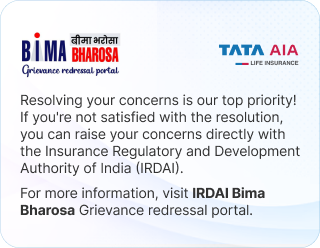Copay, coinsurance, and deductible are the three common terms related to health insurance. These clauses allow you to share a portion of your health insurance claim with the insurer and subsequently, reduce your health insurance premium
A health insurance policy is imperative to protect yourself from skyrocketing medical costs. It provides financial protection against the hefty hospitalisation expenses you might incur if you are diagnosed with any serious ailment, such as heart attack, kidney failure, and cancer, among several others. If not for a healthcare plan, a single instance of illness can wipe away all your savings in a flash.
But before you shop for a health insurance policy, you must become familiar with a few related terms. Being aware of them can help you understand your health insurance coverage better and select the best-suited policy as per your precise requirements.
This article discusses the three popular terms associated with health insurance – deductible, copay and coinsurance. Read on to learn their meanings, features, and differences.
Table of Content
-
What is Deductible in Health Insurance?
-
What is Copay in Health Insurance?
-
What is Coinsurance in Health Insurance?
-
Copay Vs. Coinsurance Vs. Deductible
-
What is Copay After Deductible?
-
Should You Buy a Health Insurance Policy with Deductible, Copay, and Coinsurance Clauses?
-
Frequently Asked Questions
What is Deductible in Health Insurance?

A deductible in health insurance is the fixed amount you need to pay when you file a claim on your mediclaim policy. The insurer deducts the deductible from the initial claim amount before paying for the remaining expenses.
For example, suppose your health insurance policy has a deductible of ₹5,000. It means that you need to pay a sum of ₹5,000 whenever you file a claim on your policy. So, if your claim amount is ₹1 lakh, you will pay ₹5,000 from your pocket, and your health insurance provider will bear ₹95,000.
The insurance company has the right to decide on the terms and conditions for the deductible in a health insurance policy. However, whether to opt for a deductible in your health plan or not rests with the policyholder.
Features of Deductibles in Health Insurance
The following are some salient features of deductibles in health insurance:
It helps insurance companies safeguard their interest against unnecessary claims
It allows policyholders to reduce their health insurance premiums
It can be different for family health plans and individual health plans
What is Copay in Health Insurance?
Copay or copayment in health insurance refers to a portion of the claim that has to be borne by the policyholder. The insurance provider settles the remaining amount. Copay in health insurance is usually expressed as a fixed amount or percentage of the total claim value.
For example, suppose your health insurance policy has a copayment clause of 10%. Now, if you file a claim of ₹1 lakh on your policy, you must pay 10% of the claim amount, i.e., ₹10,000, as per the copay clause. Your health insurance provider will pay the remaining ₹90,000.
Features of Copay in Health Insurance
Below are the prominent features of copay in health insurance:
With the copay clause, the policyholder has to bear a small portion of the claim while the insurance company bears the majority of the claim.
The copay can vary as per the medical service you are availing of.
A higher copayment results in lower health insurance premium.
The copay clause is common in senior citizen health insurance plans and for those living in metropolitan cities due to exorbitant healthcare costs.
No copayment clause indicates that the insurance company will bear the entire healthcare expenses.
How to Check if Your Health Insurance Policy Has a Copay Clause?
To check if your health insurance policy has a copayment clause, you must read the policy documents thoroughly. If you do not find the mention of the copayment clause in your policy document, you can contact the customer support team of your health insurance provider to confirm.
What is Coinsurance in Health Insurance?
Coinsurance in healthcare policy refers to the portion of the claim amount that needs to be borne by the policyholder over and above the deductible amount. In this case, too, the insurance provider bears the remaining amount after deducting the coinsurance and the deductible. Similar to copayment, coinsurance is also expressed as a fixed amount or percentage of the total claim value.
For example, suppose you have purchased a mediclaim policy with a deductible of ₹5,000 and a coinsurance clause of 10%. It means that if you file a claim of ₹1 lakh on your policy, you are required to pay ₹5,000 as deductible and 10% of the remaining claim amount as coinsurance. So, your total out-of-pocket expenses would be ₹(5,000 + 10% of 95,000), i.e., ₹14,500. The insurer will pay the remaining ₹85,500.
Features of Coinsurance in Health Insurance
The features of coinsurance in healthcare plans are as follows:
It protects insurance companies against large health insurance claims.
You may incur considerable out-of-pocket expenses as you may have to pay the deductible as well as the coinsurance amount when you make a claim.
The percentage of coinsurance generally remains fixed for all types of medical services.
You are not supposed to pay more than the out-of-pocket maximum in a calendar year.
Copay Vs Coinsurance Vs Deductible
Copay Vs Deductible
The table below depicts the differences between copay and deductible in health insurance:
Parameter |
Copay |
Deductible |
Meaning |
A fixed percentage of the claim amount the policyholder needs to pay. |
A fixed amount the policyholder has to pay at the time of making a claim. |
Application |
Applicable to specified medical services. Can vary as per the medical service availed. |
Applicable for all types of health insurance claims, irrespective of the type of medical service. |
Impact on Policy Premium |
The higher the copay clause, the lower will be your health insurance premiums. |
If the policy already mentions deductibles, it might not have a direct impact on your health insurance premium. |
Copay Vs Coinsurance
Although copay and coinsurance seem similar, there are some stark distinctions between them. The table below depicts the differences between copay and coinsurance in healthcare plans:
Parameter |
Copay |
Coinsurance |
Meaning |
A fixed percentage of the claim amount the policyholder needs to pay. |
A fixed percentage of the claim amount the policyholder needs to pay over and above the deductible. |
Payment Clause |
You must pay the copay amount every time you make a health insurance claim. |
You need to make the coinsurance payment only after exhausting the deductible. |
Time of Payment |
The copay amount has to be paid at the time of filing the claim. |
You can pay the coinsurance amount after seeking medical care. |
Deductible |
Copay and deductible usually do not exist together. |
Coinsurance is applicable only after the payment of the deductible. |
Deductible Vs Coinsurance
The table below illustrates the differences between the deductible and coinsurance in healthcare plans:
Parameter |
Deductible |
Coinsurance |
Meaning |
A fixed amount the policyholder has to pay at the time of making a claim. |
A fixed percentage of the claim amount the policyholder needs to pay over and above the deductible. |
Payment Clause |
It is mandatory to pay the deductible every time you make a health insurance claim. |
You need to make the coinsurance payment only after exhausting the deductible. |
Amount |
The amount you need to pay remains fixed irrespective of the claim value. |
Since it is expressed as a percentage of your claim value after deducting the deductible, the amount you need to pay may vary. |
Drawbacks |
As deductibles are fixed, there aren’t too many drawbacks. |
You can incur significant out-of-pocket expenses if your total claim value is on the higher side. |
What is Copay After Deductible?
Some health insurance policies come with a copay after deductible clause. If your mediclaim policy is the same, here is what it means for you:
Both the deductible and the copayment clause apply to your policy.
Your health insurance coverage will start only after the deductible is exhausted.
You are required to pay the deductible and the copay amount every time you file a claim on your policy.
The deductible and the copay amount will have to be calculated independently.
Should You Buy a Health Insurance Policy with Deductible, Copay, and Coinsurance Clauses?
Opting for a health insurance policy with either or all of the deductible, copay, and coinsurance clauses can help you reduce your premiums by a significant margin. However, it would mean that you may incur considerable out-of-pocket expenses when you file a claim on your policy.
Hence, do not forget to compare the policy features and your specific requirements before a final decision. To ensure there are no hidden clauses, read the policy document carefully.
Also, always ensure comprehensive planning by buying life insurance along with your health insurance plans for all-round protection.











 FOR EXISTING POLICY
FOR EXISTING POLICY 
 FOR NEW POLICY
FOR NEW POLICY 








